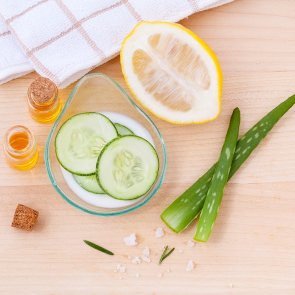5 Ingredients to Avoid in Moisturizers
 If we lived in a perfect world, there wouldn’t be any risk of buying moisturizers that contain irritating or even dangerous ingredients. The world we live in isn’t perfect though, and many cosmetic manufacturers use such ingredients, taking advantage of the lack of regulations in the cosmetic industry. If you want to be on the safe side, check out our list of ingredients to avoid in moisturizers.
If we lived in a perfect world, there wouldn’t be any risk of buying moisturizers that contain irritating or even dangerous ingredients. The world we live in isn’t perfect though, and many cosmetic manufacturers use such ingredients, taking advantage of the lack of regulations in the cosmetic industry. If you want to be on the safe side, check out our list of ingredients to avoid in moisturizers.Parabens
Parabens are a class of widely used preservatives that are valued for their fungicidal and bactericidal properties. They are found in a wide range of products, from shampoos to moisturizers to toothpastes. Although there isn’t any actual proof that parabens cause cancer, studies indicate that they may react with UV rays and cause increased skin aging.
Alternatives: phenoxyethanol, sodium benzoate, potassium sorbate, organic acids.
Check this out: How to Choose the Best Sunscreen for Your Face
Phthalates
Phthalates are chemical compounds used as plasticizers. They are also used in fragrance that can be found in many moisturizers. In the scientific community, phthalates are considered endocrine disruptions. The use of certain phthalates has been restricted in the EU, Canada, and the United States. While some phthalates are relatively harmless, especially in low concentrations (as used in moisturizers), it’s better to avoid them altogether.
Alternatives: natural fragrance (essential oils) or fragrance-free moisturizers.
Check this out: Phthalate-Free Natural Moisturizers
Mineral Oil
Mineral oil is a transparent, colorless liquid derived from petroleum. It is a common ingredient in moisturizers due to its emollient properties, lightweight texture, and low cost. Although mineral oil is an effective emollient and lubricant, it has certain drawbacks. This ingredient coats the skin like a plastic wrap, inhibiting its ability to breathe. It may also clog pores and cause acne breakouts.
Alternatives: vegetable oils (coconut oil, shea butter, cocoa butter, etc.).
Check this out: How to Choose the Right Oil for Your Skin Type
Hydroquinone
Hydroquinone is a skin whitening ingredient that works by decreasing the production of melanin. It is widely used in prescription-only treatments for pigmentation, but over-the-counter bleaching creams with hydroquinone are banned in the European Union. So if you’re looking for a skin lightening moisturizer, make sure that it’s hydroquinone-free.
Alternatives: alpha hydroxy acids, kojic acid, retinoids, vitamin C, papaya extract, licorice extract.
Check this out: 5 Effective Ingredients for Skin Whitening
Artificial Fragrance
Most moisturizers have fragrance (or parfum) on their ingredient list. The problem with this ingredient is that you can never be sure what it consists of, as manufacturers aren’t required to reveal the exact composition of their fragrances. It might be safe, but it might be not; it’s kind of like playing Russian roulette. If your skin is very sensitive, you’d better stick to unscented products.
Alternatives: natural fragrance (essential oils) or fragrance-free moisturizers.
Check this out: 3 Tips for Making Your Own Essential Oil Blends
Breadcrumbs
Filters
- Face
Tags
Related Articles
- 7 Ingredients to Avoid in Feminine Intimate Washes, 4 Ingredients to Avoid in Hair Dyes, 5 Ingredients to Avoid in Your Face Wash, Botanical Ingredients in Cosmetics and Their Benefits